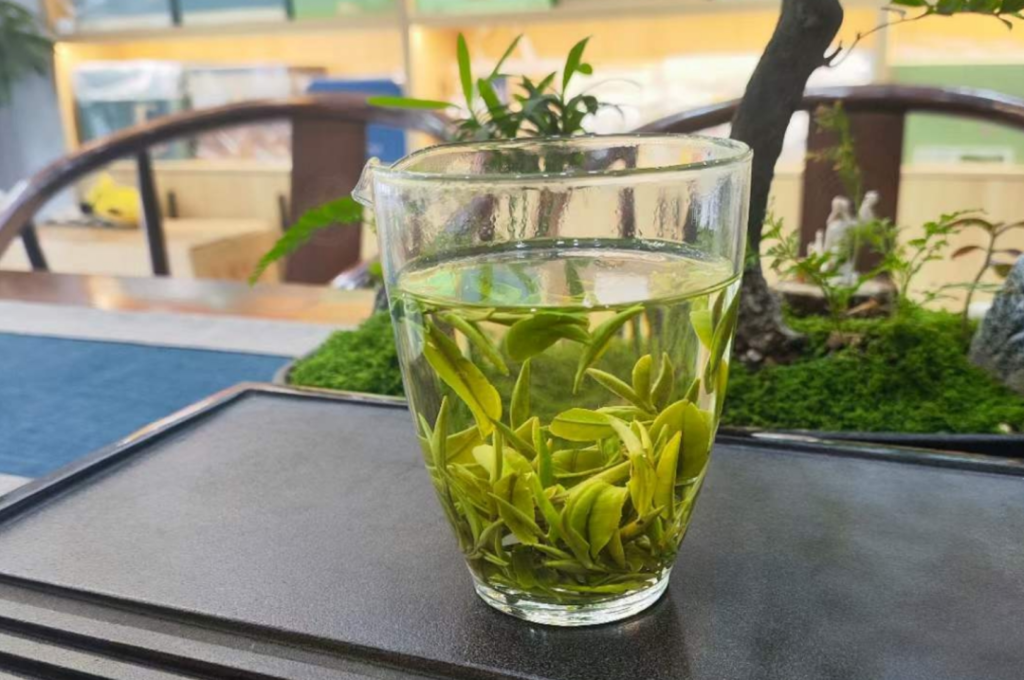Tea is one of the most popular beverages worldwide, and its health value has been extensively studied by modern science. Below are the main components of tea and their potential effects on human health:
I. Main Active Components of Tea
1. Polyphenolic Compounds (15-30% of dry weight)
Catechins: Represented by epigallocatechin gallate (EGCG), they are a class of strong antioxidants, with higher content generally found in green tea.
Theaflavins and Thearubigins: Formed from the oxidation of catechins during the oxidation conversion process of tea leaves (commonly known as fermentation).
Anthocyanins: Natural pigments found in some teas, such as Guzhu Zisun and Zi Ya tea.
2. Alkaloids
Caffeine (1-5%): A central nervous system stimulant.
Theophylline and Theobromine: Have a weaker stimulating effect than caffeine but can relax smooth muscles.
3. Amino Acids
L-Theanine (1-2%): A non-protein amino acid unique to tea, accounting for more than 50% of free amino acids.
Gamma-Aminobutyric Acid (GABA): A characteristic component of some teas (such as GABA tea) after anaerobic treatment.
4. Vitamins and Minerals
Vitamin C (found in higher amounts in green tea), Vitamin E, B-complex vitamins.
Minerals such as potassium, magnesium, manganese, and fluoride.
5. Other Components
Polysaccharides (TPS): Higher content in mature teas, such as Fuzhuan brick tea, ripe Pu-erh tea, and some oolong teas.
Aromatic substances: Esters, alcohols (such as linalool), etc., which give tea its aroma.
Dietary fiber: Mainly found in the tea leaves (commonly known as: tea dregs).
II. Main Health Effects
1. Antioxidant and Anti-Aging Mechanisms: Polyphenols (especially EGCG) scavenge free radicals and inhibit lipid peroxidation.
Associated research: May delay skin aging and reduce the risk of DNA damage.
2. Metabolic Regulation and Weight Management
Promoting fat metabolism: Caffeine and catechins synergistically activate lipase, accelerating fat breakdown.
Regulating blood sugar: Tea polysaccharides may inhibit α-glucosidase activity, assisting in blood sugar stability (with dietary control).
3. Cardiovascular Protection
Improving blood lipids: Reducing the oxidation of low-density lipoprotein (LDL), inhibiting the formation of atherosclerotic plaques.
Regulating blood pressure: Tea polyphenols play a mild blood pressure-lowering role by inhibiting angiotensin-converting enzyme (ACE).
4. Neurological and Cognitive Functions
Stimulation and relaxation coexist: Caffeine for stimulation, L-theanine for promoting α-wave release, alleviating anxiety.
Potential Neuroprotection: Animal experiments have shown that EGCG may reduce the deposition of beta-amyloid protein, which is associated with Alzheimer’s disease.
Antibacterial and Immunomodulation: Catechins have an inhibitory effect on pathogens such as Staphylococcus aureus and Helicobacter pylori.
Regulation of Intestinal Flor: Tea polyphenols can promote the proliferation of probiotics, such as Bifidobacterium.
Other Potential Effects: Dental Protection and Caries Prevention: Fluoride strengthens enamel, and polyphenols inhibit caries-causing bacteria.
Radiation Protection: Tea polyphenols may mitigate damage from ultraviolet or ionizing radiation (currently in the animal experimentation stage).
III. Scientific Tea Drinking Suggestions: Moderation is key: It is advisable to consume 3-4 cups daily (each cup being approximately 300ml).
Select Tea Based on Individual Needs: Those with nervous sensitivity may opt for low-caffeine teas, such as aged white tea, heavily fermented oolong tea, or decaffeinated tea.
People with a cold stomach should avoid drinking green tea on an empty stomach and are advised to choose black tea or ripe pu-erh tea instead.
Attention to Brewing: Avoid high-temperature, long-soak brewing to reduce the excessive release of tannins that can cause gastric irritation.
The first infusion contains a higher amount of fluoride, children should control their intake.



